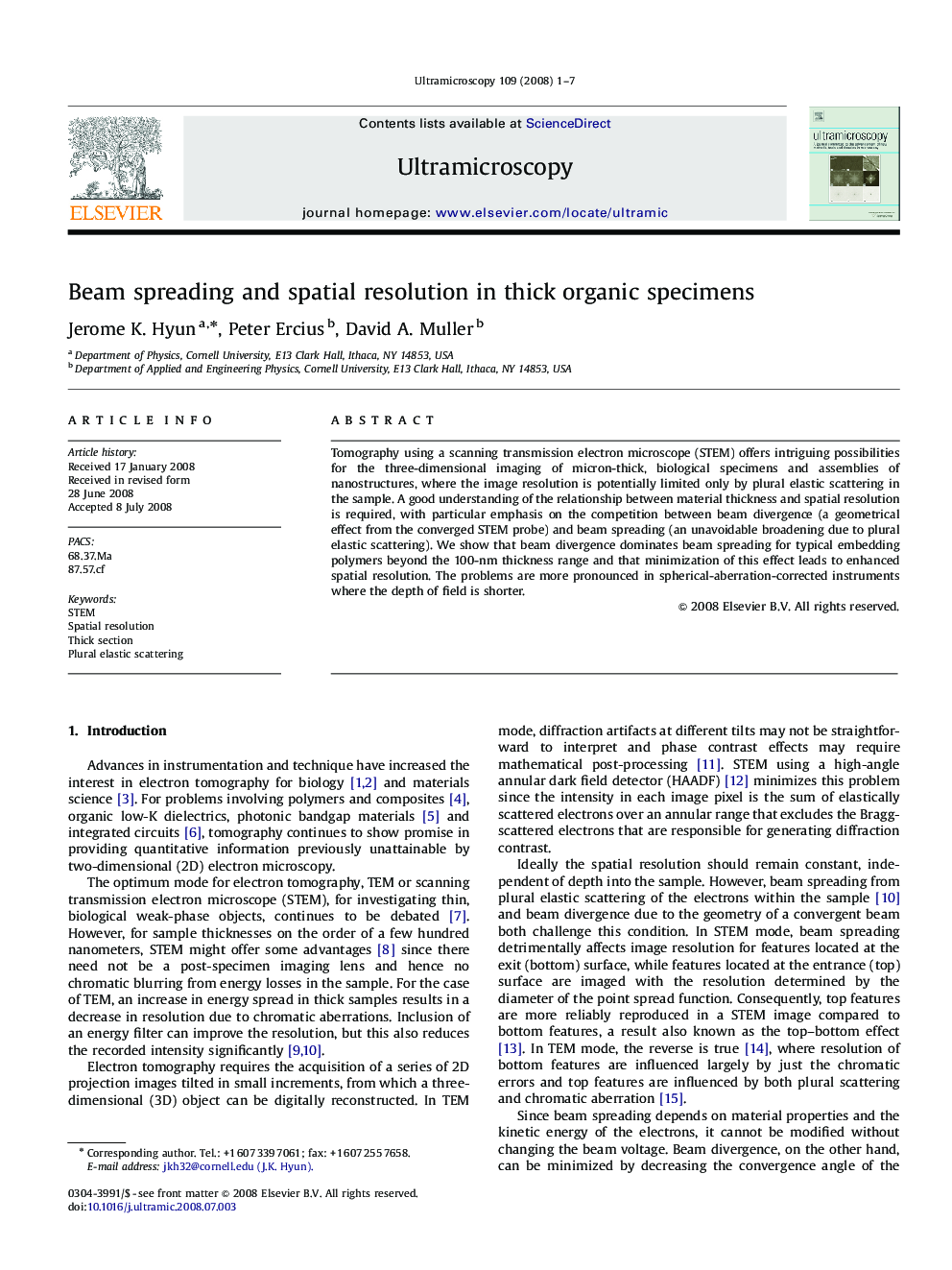| Article ID | Journal | Published Year | Pages | File Type |
|---|---|---|---|---|
| 1678913 | Ultramicroscopy | 2008 | 7 Pages |
Tomography using a scanning transmission electron microscope (STEM) offers intriguing possibilities for the three-dimensional imaging of micron-thick, biological specimens and assemblies of nanostructures, where the image resolution is potentially limited only by plural elastic scattering in the sample. A good understanding of the relationship between material thickness and spatial resolution is required, with particular emphasis on the competition between beam divergence (a geometrical effect from the converged STEM probe) and beam spreading (an unavoidable broadening due to plural elastic scattering). We show that beam divergence dominates beam spreading for typical embedding polymers beyond the 100-nm thickness range and that minimization of this effect leads to enhanced spatial resolution. The problems are more pronounced in spherical-aberration-corrected instruments where the depth of field is shorter.
